Nate and I have been trying to find ways to help the kids explore their heritage more. I feel like one of the best ways to instill a love of history and humanities in children is to start with their direct ancestry. Make it personally relevant, and then branch out from there. We've actually been booking quite a bit of travel lately to show the kids various places that are relevant in explaining exactly how their family came to be.
On our very first date, Nate told me his entire lineage. True story. His background is an intricate spiderweb that stretches across the globe, back to Vikings in boats, the “real” Zorro, and Chickasaws in Oklahoma. It's that last bit that we're currently exploring, as his entire family is going through the (long, research-intensive) process of registering with the Indian Nation. So when San Manuel reached out and asked us to partner with them to share about their annual Pow Wow event, our ears perked right up!
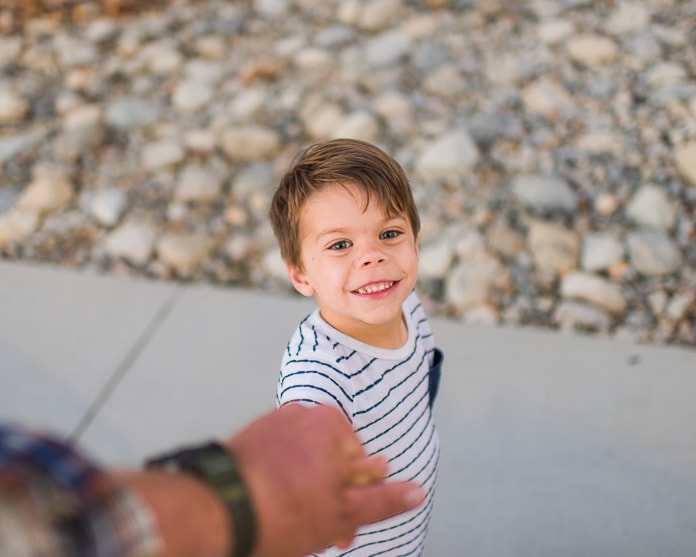
Pow Wow is hosted by the San Manuel Band of Serrano Mission Indians up at Cal State San Bernadino every fall. When we visited on the very first day, we were completely overwhelmed at the sheer volume of festivity. The event is usually held outdoors but was moved into the Coussoulis Arena due to weather this year. Every square inch of that space was filled to the brim with food, booths representing the tribe's heritage, and bead-and-feather adorned dancers.
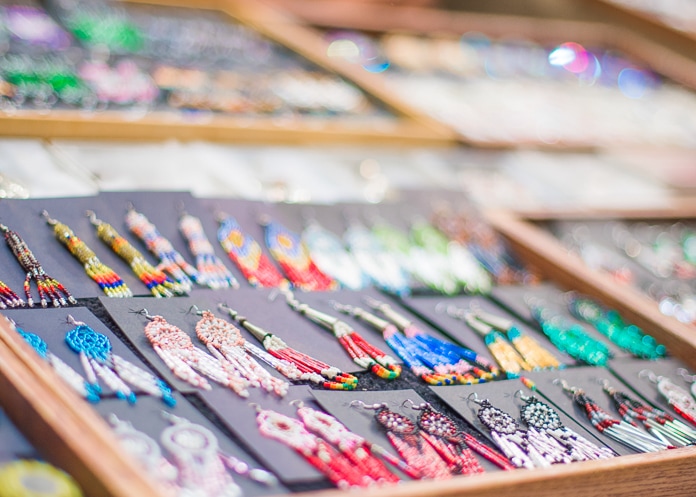
The boys wanted to touch every. single. thing.
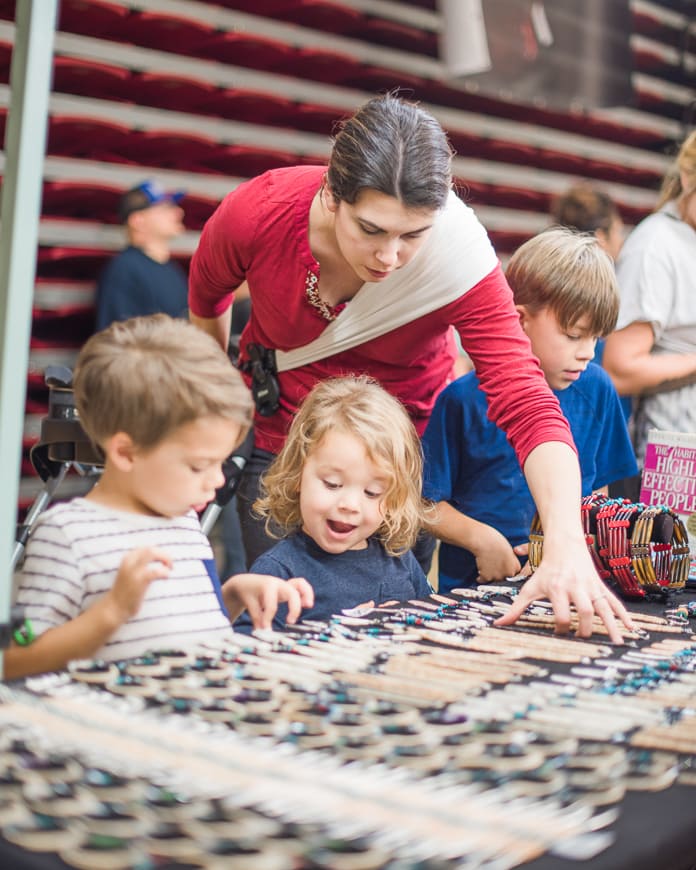
I had a meeting with a San Manuel tribe member before the event and I asked him what I ask every single one of our clients: what is your goal in partnering with us? What do you want our audience to know?
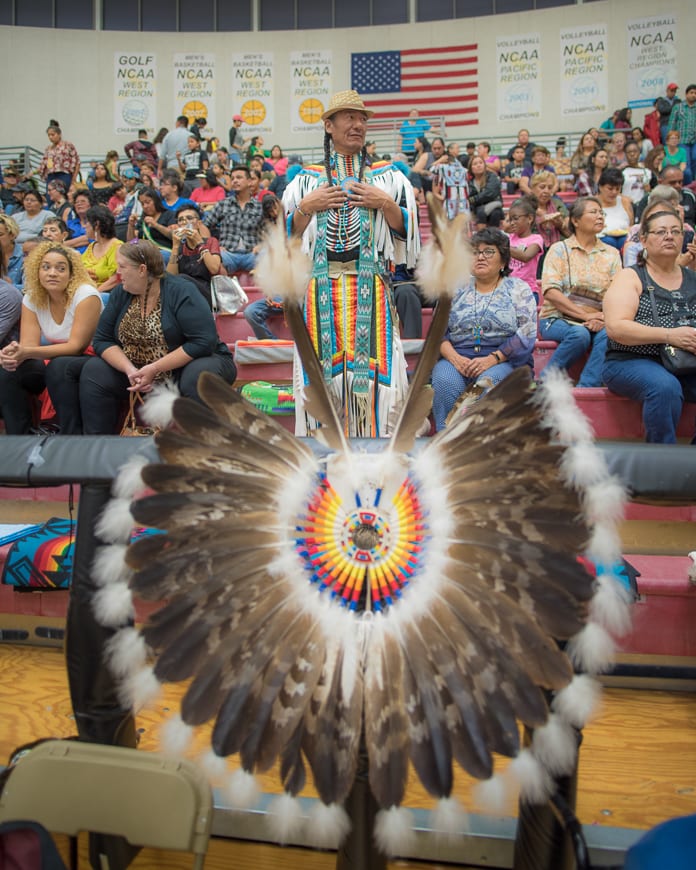
The answer was simple: heritage. This event doesn't need attention. The massively-popular, packed space doesn't need more attendees. And as far as money? Well, admittance is free.
“We simply want someone to share our story.”
And what a story it is.
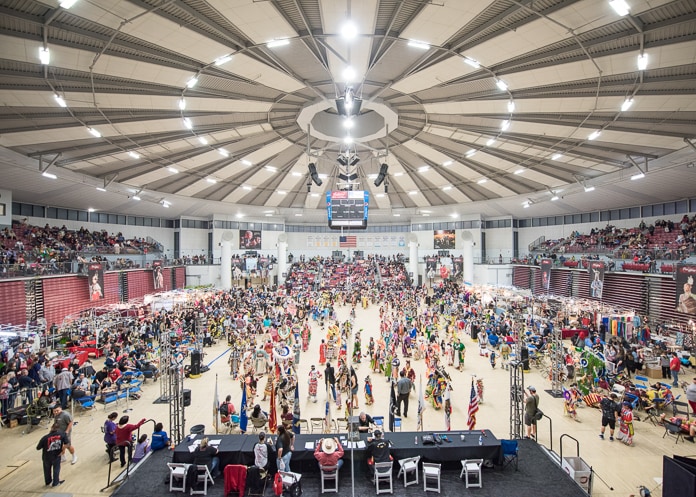
Native American history is touched on briefly in school here in the United States, but there are so many things to explore beyond that topical information. Did you know that George W. Bush signed legislation designating the Friday after Thanksgiving as Native American Heritage Day? It's a BIG deal for Native Americans, with some tribes adjusting the day of their Pow Wow to fall on that day. Oh yes, Pow Wows are a national thing and you can find one near you if you're looking to take part!
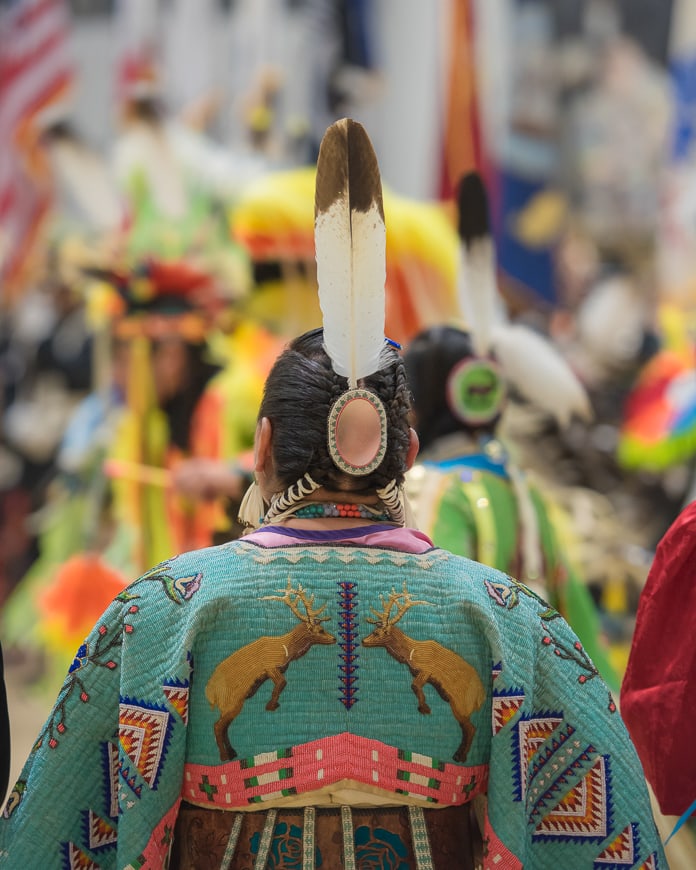
The first nations met frequently, but the term Pow Wow wasn’t popularized until this century, after Wild Bill got involved with the touring Wild West show that included Native Americans and the unique cultural heritage of Native peoples become known to mainstream audiences.
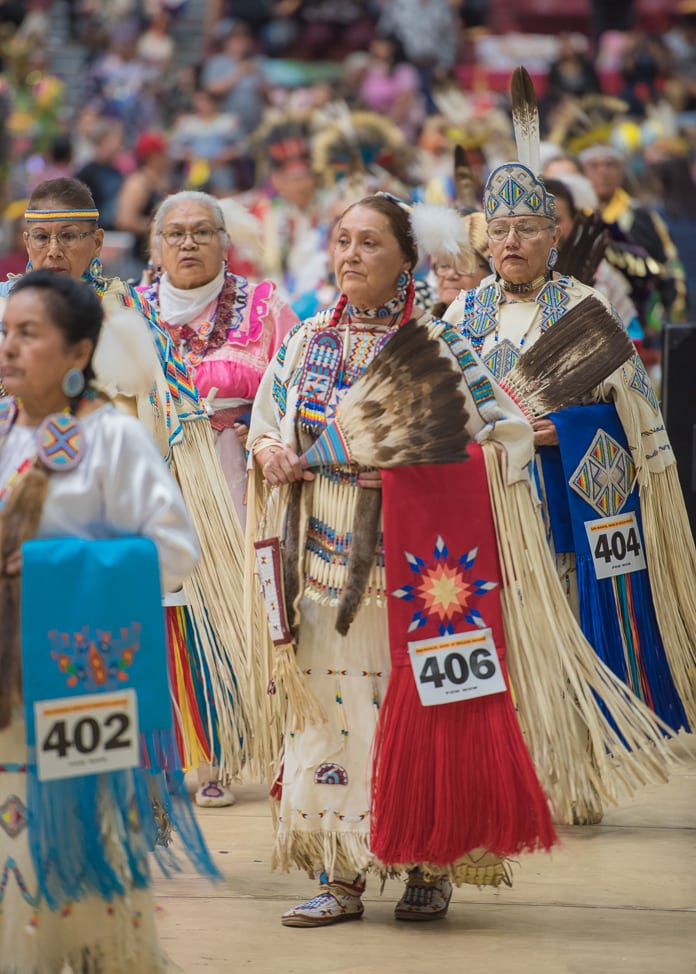
Today, Pow Wow serves as an expression of heritage, showcasing dramatically-different passed-down dances exhibited by competitors from tribes all around the country. It's a high-stakes meeting, with over $250,000 in prize money at stake at this event alone. Many performers spend the entire season traveling from Pow Wow to Pow Wow, using their earning to fund the expedition. There are around 35 Pow Wows in California alone every single year, and San Manuel's is the largest in the state.
Bird Songs are deeply rooted in the identity of the San Manuel Band of Mission Indians and begin the festivities. Twenty-two years ago, San Manuel founded this pow wow to invite Native people from across the nation to both compete in established pow wow dance and music styles and celebrate Native American culture. Pow wow opens with Serrano Indian Big Horn Sheep Songs, sung by San Manuel Bird Singers to welcome tribes from across the nation to the Serrano ancestral lands. Competition and exhibition dances open to all participants include the Chicken, Grass, Fancy dance and others. My favorite is the intertribal dance, where traditional songs are sung and all peoples are welcome to enter the arena and dance together.
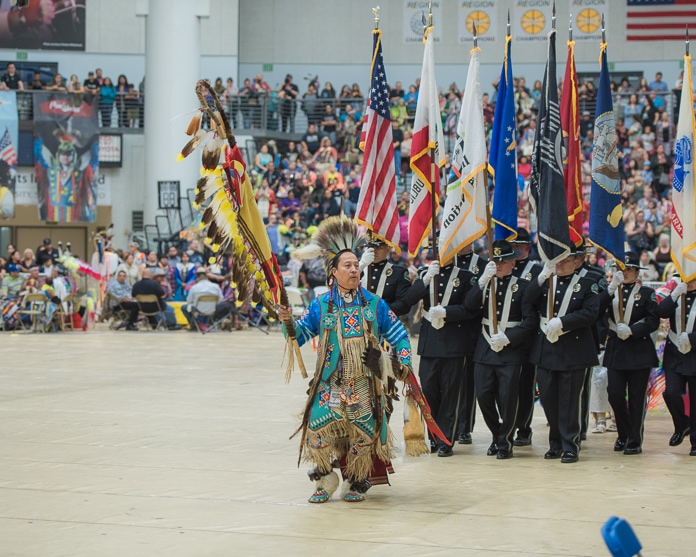
The event begins with the Grand Entry, a moving display where flags including the US flag, tribal flags, the POW flag and Eagle staffs are brought in. It took my breath away to see tribe members holding the United States flag in a visible place of honor, despite the horrific way that indigenous people have been treated throughout history. To Native Americans, it symbolizes that their tribal nations are now a part of the United States, and their dedication to our country is astonishing. Per capita, there are more Native American veterans than any other race (which brings some real sincerity and gravity to the often-used term “warrior society” which speaks to their reputation as fierce, strong people). We were informed that when the “code talkers” became prevalent, it provided a way for many of the young tribesmen to take their place as warriors and serve, not for a political ideology, but to represent their tribe and their place in this great land.
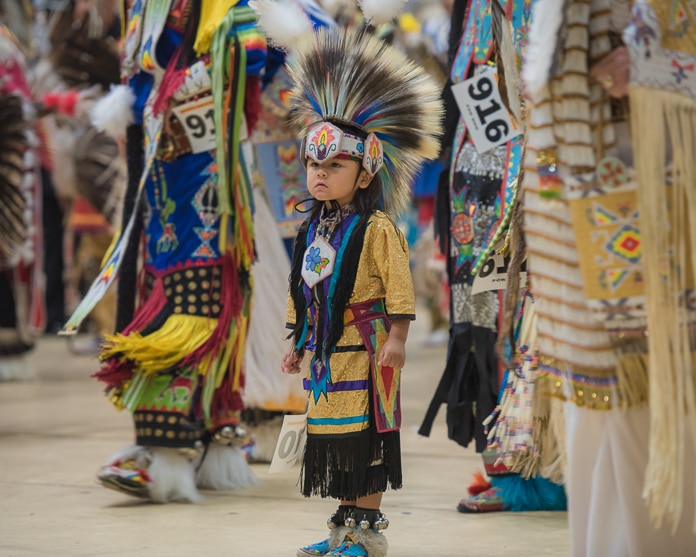
Speaking of strength, one particularly unique thing about Pow Wow stood out to me above everything else. The involvement of family and the value of children and women was obvious in every single aspect. Women exhibited in the arena, right alongside men. Booths were run by husbands and wives together. Children were present and involved in the audience and the arena, and the small performers took their part in the Tiny Tots dance very seriously. As a family who intentionally exposes our children to all sorts of environments and situations, the emphasis on family in these surroundings resonated with me.
At one point my boys were rolling down a grassy hill by the food area and a fellow mom plopped down beside me. I braced myself for a lecture about safety or boundaries, and was surprised when her young child ran up and started careening down next to my boys. They collided mid-hill and toppled into a haphazard display of tangled arms and legs, laughing and squealing and creating their own lanes in the untamed grass. No boundaries. No labels. Just some humans figuring out their own way in the world.
What a learning moment to behold.
I couldn't help but think about the occasions when those moments had been intervened upon for my children in the past, and ruminate about the unusual opportunities that are present in that simple, unstructured time. It's no wonder that Indians are so enthusiastic about their culture and their heritage. They've carved out the space to fully explore and understand who they are as people. We could all do well to tend to our souls in this manner.
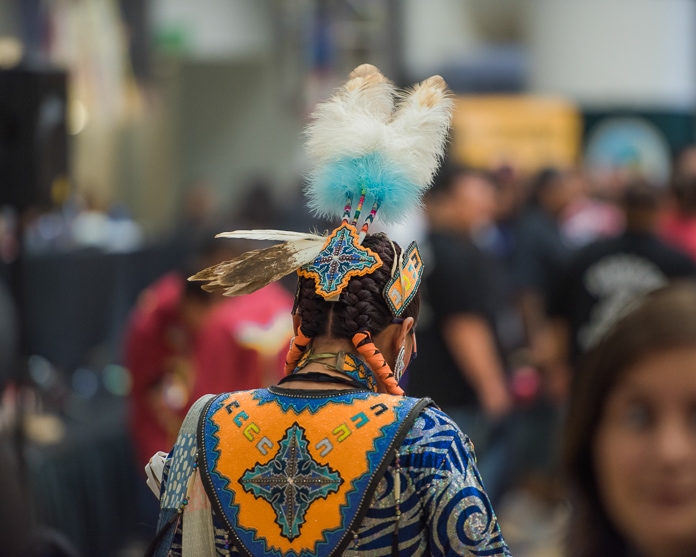
One final word on culture. I had a TON of questions about verbiage and respecting customs. I learned that the term “Indian” is totally fine, but you should definitely not refer to their regalia as a costume. Each of these hand-crafted pieces of clothing have their own meaning. Every tribe has standard patterns or symbols, and the wearer adds their own story as they learn more about themselves and their heritage. A tribe member I spoke with had fond memories of seeking out rare and delicate Trillium flowers when he was a child, so he put beads in that shape on his cloth to demonstrate the preciousness of life.
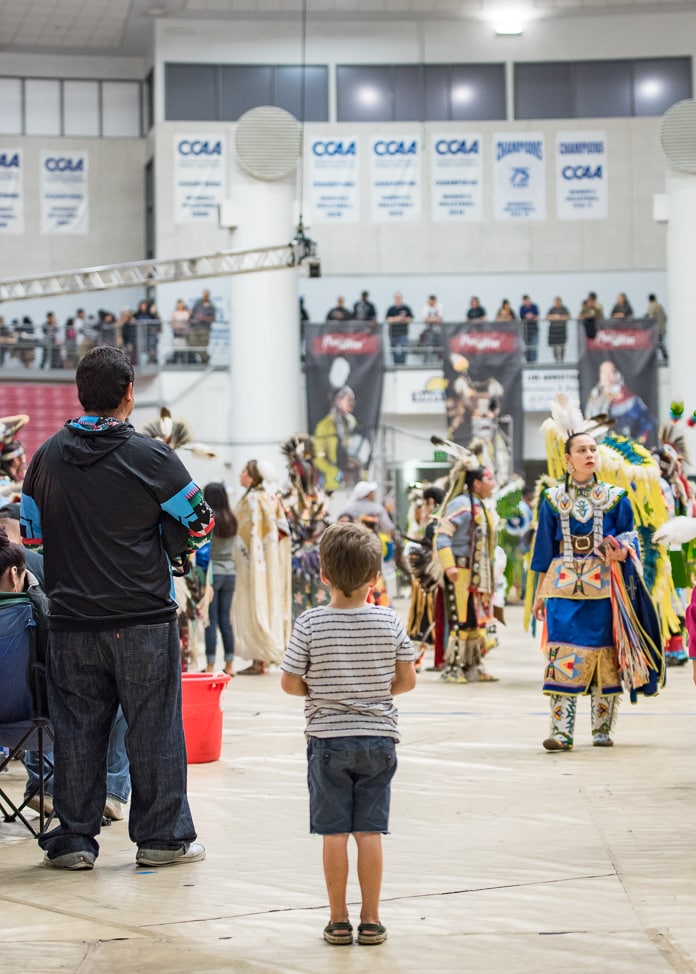
If you have a chance to make it out to a Pow Pow, I highly recommend it. For our family, it was a quick addition to the list of new annual traditions.
How do you help your children understand and celebrate culture?